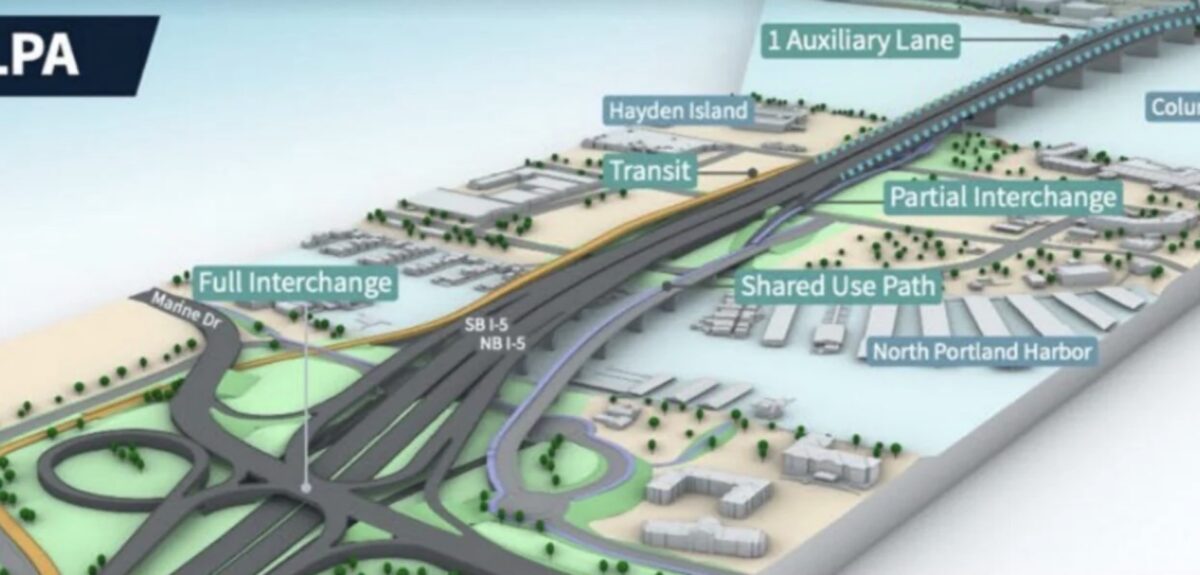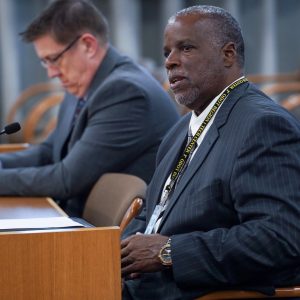
Note: This piece was submitted by a close observer of the Portland – Vancouver I-5 freeway project (a.k.a. Interstate Bridge Replacement Program) who asked to remain anonymous.
Project managers, listen up!
You’re reviving a mega-project that failed to secure funding a decade ago. Do you go back and re-examine the original assumptions? Absolutely not! You double down! Here’s a step-by-step guide.
Scare them!
“This bridge is going to collapse into the river in an earthquake, you have to fund this project to replace it”.
Absolutely do not discuss options for seismic remediation of current structures. And definitely don’t mention that most of the five miles of this project are on dry land.
And let’s not bring up the other several thousand bridges in the two states that also need seismic upgrading.
Rush them!
“We have to meet Federal deadlines!”
Never list specific programs or deadline dates. But make it clear that if we want to reexamine the Purpose and Need for the project (because of course, nothing important has changed since we drafted the last Purpose and Need 15 years ago) it will add a year or two to the project.
“We have to start environmental analysis now because IIJA just passed.” Don’t mention that no agencies have published notices of available funding yet, much less indicated deadlines for application.
Wield the Purpose and Need as a cudgel
“I understand you think seismic resilience is the highest priority, but the Purpose and Need says we also have to deal with congestion. If we don’t check all the boxes we have to go back and start over.” (see “Rush Them!”)
Veneer is more important than substance
Hire a Climate Officer and and an Equity Officer, but don’t put climate and equity on par with the other goals. (See “Wield the Purpose and Need…”)
Learn to filibuster
Time your presentation to take up most of the meeting, leave as little time for Q&A as possible.
Monoliths are your friend
The traditional response of funders worried about “fiscal constraints” (i.e., a reluctance to fund your whole project) is project phasing. You can insulate yourself from this kind of fiscal responsibility by designing your project as a single large structure.
Options are Bad
Remember, your goal is not to give decision makers choices, because they could choose the option you don’t like. Make sure at the end of the day they only have one choice to make: pay for it or not. (And dare them not to pay for it. See “Scare Them!”)
More of our IBRP coverage can be found here.






Thanks for reading.
BikePortland has served this community with independent community journalism since 2005. We rely on subscriptions from readers like you to survive. Your financial support is vital in keeping this valuable resource alive and well.
Please subscribe today to strengthen and expand our work.
OMG this is the funniest thing I’ve read. When I FOIA’d ODOT in 2018 asking how much they spent on planning for the RQ it was around $3.5 million.
At this point its probably doubled, if not tripled that. And nothing has been built or approved. But their project managers (AICP certified) are making huge salaries and producing their own fluff videos on Youtube with ODOT dollars.
Thanks American Planning Association, continuing to do your best at churning out community disintegrators.
Among planners and charlatans who want to be identified as city planners, AICP = American Institute of Certified Planners.
Among engineers and architects and anyone else who has a cynical view of the city planning profession, AICP = Any Idiot Can Plan.
[Thanks to Bob Yakas for that one.]
The excess salaries of project managers pale in comparison to the salaries and profit being made by consultants. That profit is guaranteed regardless of their performance. Plus, it increases as their fees go up. That might be OK were it not for the fact that those consultants were all hired without considering cost. The project will also be built under the “design-build” procurement method, which also offers guaranteed profit – no actual bids. That profit pays for a lot of “backroom” effort to push stupid transportation projects upward in cost and onward in speed of implementation. Make hay while the sun shines.
Planners love to plan!
Whoever wrote this has been running the PBOT Bureau Advisory Committee meetings for the last 20 years at least – it’s the same Bible that PBOT staffers regularly employ for pretty much all their projects.
Don’t forget the one used when everything else fails–THE CODE. “Sorry, we’d love to do what you propose, but THE CODE wouldn’t allow that.”
The project team knows that most people will be intimidated by that, and the chances are slim that someone will actually know the code.
It’s a more intimidating version of “Please–leave this up to the experts”, or “You must not be a traffic engineer, because if you were, you’d know… “. Sometimes the project believes the code really does say that, other times they know it doesn’t. The Sellwood Bridge project did a variation–the code actually DID say what they said it did, but they’d unknowingly been using the wrong code, even writing it into the project manual.
Our traffic models projected that this would be the least congested option.
We developed this optimal solution by value engineering the various inputs.
The solution you are suggesting will be cost-prohibitive.
On Phasing:
You folks have a scary level of insight into how these big projects work. My knowledge usually ends at the point where I’m asked to stick those little colored dots onto a poster board. That’s when I know my suggestions and ideas have really been heard and integrated into the project – and I *feel good*!!!
When federal dollars are involved THE CODE is a real thing known as design standards. The Federal Highway Administration (FHWA) will not allow federal dollars to be used on interstate freeway projects unless federal standards for specific elements are followed. Very few PBOT projects involve federal funds so it’s much easier for PBOT to follow more flexible design standards.
Of course there are codes governing projects, including ones not involving federal dollars. So sometimes when project staff uses a code requirement as a reason for doing something and not another, it’s valid. What I was referring to is when projects claim a code standard forces them to do or not do something, when the relevant code doesn’t do that at all.
Gail Achtermann, then chair of OTC, remarked in a public meeting that $80 million for replacing Sellwood Bridge was sufficient to meet all transportation needs of our state.
ODOT, Matt Garrett leading, attended that meeting and proceeded to spend $320 million for the project.
That is four times overbuilding, and more than was wasted on planning the CRC fiasco!
Gail Achtermann died shortly thereafter.
Yep. This is why I hope the 2.0 version of this monstrosity suffers the same fate as its predecessor.